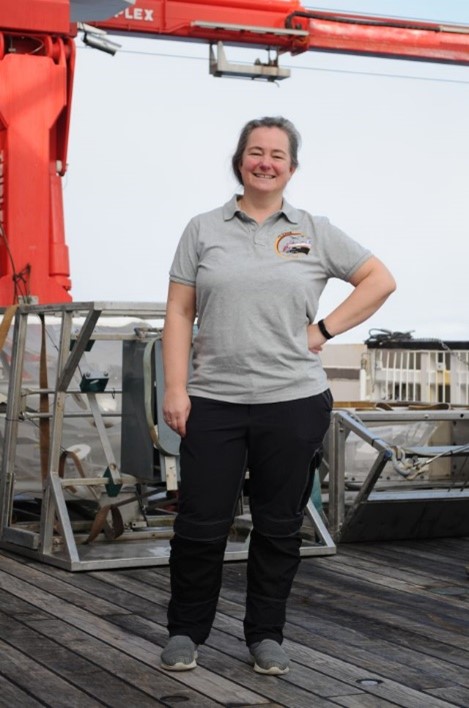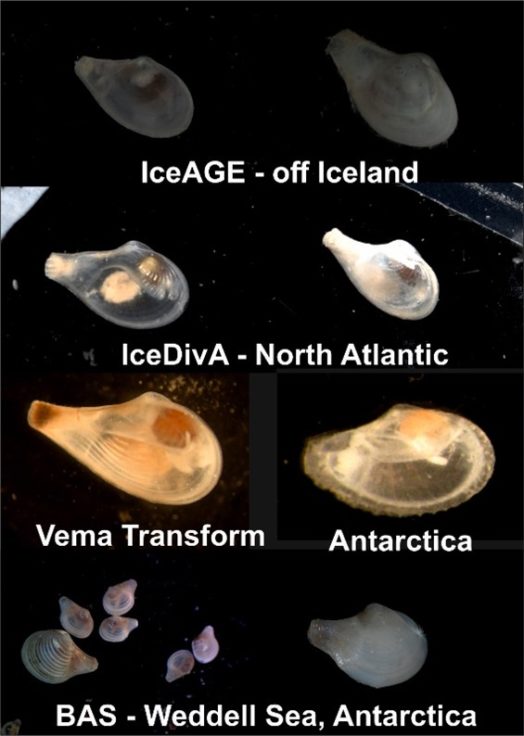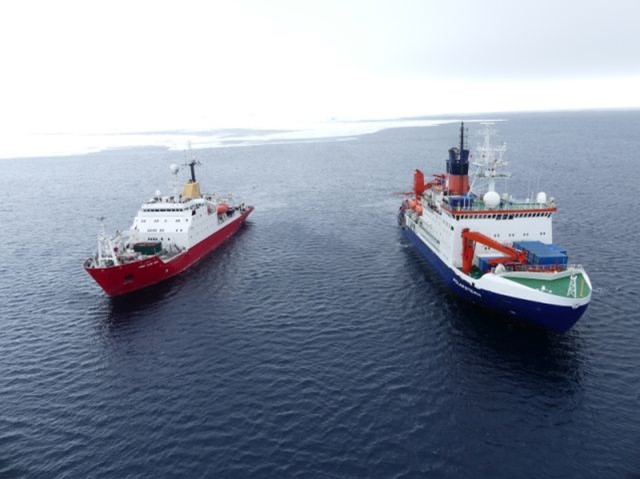Blog: My ‘silver anniversary’ research cruise
1 February, 2021
British Antarctic Survey biodiversity biologist Dr Katrin Linse is onboard German ship RV Sonne conducting a research expedition to map biodiversity in the Atlantic deep sea. In this blog, Katrin marks 25 years conducting research expeditions and shares updates from the ongoing IceDivA expedition.
In early May 1996 I stood on the wooden pier of Puerto Williams, the southernmost city of South America, waiting for the rigid inflatable boat of RV Polarstern to pick us up. We were joining the ship to sample the seafloor animals living on the South American shelf and deep-sea slope of the Drake Passage to compare them with those living in Antarctica. I was an undergrad student, sent to deploy a newly designed epibenthic sledge (EBS) to collect animals living on the seafloor as well as swimming above it. My aim was to collect samples for my upcoming PhD project.

And now, almost 25 years to the day, I am standing on RV Sonne, 500 km north of Madeira and am waiting to send our double-sampler EBS BERTA sledge to the Abyss (Figure 1). The aim is to collect small-sized invertebrate animals (e.g. shrimps, worms, clams, brittle stars and their friends) from 4170 m depth so we, the marine biologists and taxonomic experts on board and back on land, can study their biodiversity and distribution patterns. You could call us the modern day Linneaus’ or Darwins, as our research starts with studying the animals we collect in detail; identifying their scientific names or if newly discovered, describing them and giving them scientific names, before we use their morphological and molecular characteristics to analyse their evolutionary relationships.
The taxonomic group I am most familiar with are the bivalves, the two-valves seashells that include clams, cockles, and mussels, and especially those from the Antarctic and the deep sea. Over the last 25 years I have collected marine seafloor animals using epibenthic sledges throughout the Atlantic Ocean, from Iceland via the tropics to the southernmost Weddell Sea in Antarctica. This enables me now to evaluate taxa, like the pictured Cuspidariidae (Figure 2), a group of carnivorous bivalves, for their distribution ranges, phylogenetic relationships, and determine how resilient they are to climate change.

So far I have deployed our EBSs six times to ocean depths of 4900 m to 5500 m and I am hoping for another four deployments before we have to end our biological field science and steam back to Emden. And while each muddy sample coming up might only have a few litres of volume, these can include hundreds to thousands of the small animals my colleagues and I want to study. The first expressions of joy you can hear when we sift the samples over 300µm sieves and see a faint movement of an isopod, (a marine woodlouse) or the shimmering shell of a bivalve.
This IceDivA expedition or SO280, following RV Sonne’s numerical expedition order, is very special to me, not only because it marks 25 years for me of joining ship-borne expeditions, but also being allowed to enrol during the current pandemic. As national and international travel is heavily restricted and many nations are in lockdown, we on board, after quarantine and multiple tests prior to and social distancing at the start of the expedition, are now allowed to work together like in the past. And working in temperate and non-polar waters is still exceptional for me. Being employed at British Antarctic Survey, I am more familiar with an ocean covered in sea ice (Figure 3) than with water and air temperatures above 15°C. And I thought travelling to the North Atlantic in January would be mean cold days of working on a windy deck. Therefore, I packed my Antarctic, padded, extra warm, waterproof overall, to stay warm and dry. Luckily, RV Sonne’s store sells branded T-shirts to stop me over heating while at work!

My only other warm-water expedition was the maiden voyage of RV Sonne in December 2014 to January 2015. Coming back on board six years later, and seeing familiar faces from the ship’s crew again, is another pleasaure of this expedition. Knowing you are in great hands that will enable you to collect your research samples 24/7, but also hearing whether your ideas and plans are possible is invaluable.
The IceDivA expedition blog is now live: https://www.iatlantic.eu/our-work/expeditions/icediva/
Weekly updates are published here (SO280-GPF 20-3-087H): https://www.ldf.uni-hamburg.de/en/sonne/wochenberichte.html
–
The ‘IceDivA’ project in full is IceAGE (Icelandic marine Animals: Genetics and Ecology) and DIVA (Latitudinal Gradients in BioDIVersity in the deep Atlantic).